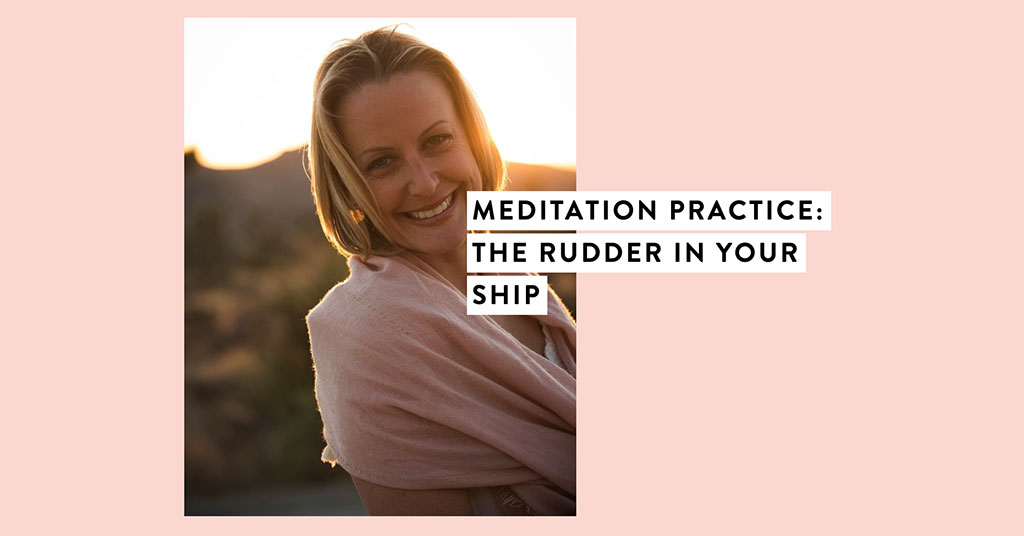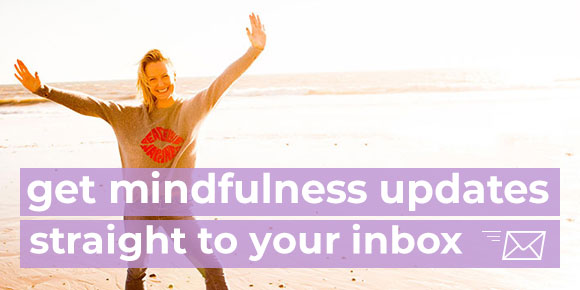
Meditation Practice: The Rudder in Your Ship
Featured on ThreeMD’s
Elizabeth Winkler is a Licensed Marriage and Family Therapist and Certified Meditation Teacher who practices in Beverly Hills, CA. She integrates mindfulness and meditation into the therapeutic process to accelerate her clients’ personal growth. She created a mindfulness process called Heart Surgery and developed the Heart Surgery Mindfulness Kit to help children experience the benefits of mindfulness through a fun and creative process. Her new virtual course Living in Uncertainty begins on July 26th (registration is still open!). We reached out to Elizabeth for her advice about where to start when it comes to meditation and mindfulness, what to expect, and how to create a practice. We’ll let her take it from here!
2020 has become a year of uncertainty, loss, and revolution within our country, communities, and ourselves. My clients, groups, and friends have found the structure of daily meditation and mindfulness practices to be the rudder in their ship, offering ease through times of turbulence. My desire is to find a practice that works best for you. When we make meditation another thing I “have” to do, it becomes an obstacle to deepening into peace. There is no right practice, rather the right one is the meditation that resonates with you. All you need is an open mind and willingness to discover the many ways we can become more connected to your power of presence.
8 STEPS TO EXPLORE, IMPLEMENT, AND MAINTAIN A MEDITATION OR MINDFULNESS PRACTICE
1. Exploring Various Practices
To begin, I encourage you to download an app or two so that you can expose yourself to a variety of guided meditation practices. My favorite app is Insight Timer, which I use every morning. I enjoy Insight Timer because it has a large library of teachers, courses, and talks that are easy to jump into and expand your practice. Recently in the evenings, I have been listening to an Insight Timer course on Yoga Nidra, which is a type of meditation that helps with sleep. I share this because I was so pleasantly surprised to find another effective practice that I had previously not known. That is the beauty of these apps. Therefore, if you are new to meditation or have a longstanding practice like me, there are always new and interesting additions we can explore through these amazing apps. I also love the Brightmind app and many of my clients enjoy: Calm, Headspace, Unplug, and Stop Breathe and Think. Most of these apps are free so explore them for yourself and find one that works best for you!
2. Creating a New Habit
Many of us want to meditate, but we have trouble maintaining the habit. When we ritualize our meditation, we are more likely to do it. Two acronyms RPM (rise, pee, meditate) and RAW (right after work) help ground your practice by pairing them with ritualized transition times of the day. I find the RPM ritual to be highly effective because if we put anything else before meditation (reading, texts, or emails) we tend to get lost in a long list of excuses of how we don’t have time to meditate.
It is helpful to know that people will be more successful maintaining a new mindfulness practice when they add it to something that is already strongly ritualized in their daily routine. For example, if you have a coffee or tea ritual, then have a sticky note there with your chosen mindfulness practice: gratitude practice, pick a mantra to practice throughout the day, or employ a pause practice such as taking 3 conscious breaths. Additional rituals to ground your practice include: lighting a candle, ringing a bell, burning sage or palo santo, picking a card from an inspirational card deck, or reading an excerpt from a cherished book.
3. Where to Meditate
Many people ask where should I meditate? There is no “should.” The important thing in the beginning is that you do it, so if that means you do it in bed, then try out “beditation.” If you fear falling back to sleep, then sit up in your bed and click the meditation on your app! Many people enjoy creating a sacred space for meditation because over time it holds the energy of your repeated practice, which can be very comforting in times of challenge. I have also found that sitting outside or in nature is a powerful place to practice meditation.
4. Commit to Daily Morning Practice
I want to speak more on the power of a morning practice. Once you have a meditation habit started, I want to encourage you to consider moving it to the beginning of your morning if you did not start out that way. When we wake up our brains are not fully awake and we have an opportunity to mold them by choosing peace (meditation) over potential stress (texts, news, emails). A study in the book Broadcasting Happiness by Michelle Gielan shows that what we do the first 30 minutes of our day will dictate the trajectory of our day. If we meditate before reading texts and news headlines we will be better equipped to face what may be on the other side of those emails and texts. However, if you read them first and there is something you need to tend to, you are less likely to meditate. Especially now, with the consistent stress of the news and the rise of COVID-19 cases, we really need to commit to our calm before we begin our day. This is where I reiterate: RPM: Rise, Pee, Meditate. No matter what, we can make the choice to first click on a guided meditation before we click on texts, social media, and the news. Your stress level will go down, your depth of calm will widen, and your relationships will also reap the benefits.
5. Demystifying Meditation
Many people give up quickly when learning to meditate due to unrealistic expectations about what they think they are supposed to experience. I want to address this. The most common thing I hear is that I can’t quiet my mind, so I’m not a good meditator. We have between 60-80,000 thoughts a day and when we resist them or try to stop them we actually create more thoughts. This is because what we resist persists. Meditation is a space of acceptance of what is happening in the mind, heart, and body. It is a place where we can witness the thoughts that judge our experience rather than mindlessly believe those negative thoughts. You can anchor into your awareness by using it as a tool that notices the activity of the mind, heart, and body while you are meditating. When we get distracted in meditation, that is NORMAL and an important part of meditation. You are human. The guidance to remember when you notice you are distracted, drifting, or lost in thinking is to gently come back to your object of attention (the breath, mantra, or guidance).
6. Pause Practice
I want to also equip you with a mindfulness practice you can use when you get triggered and reactivity starts to brew inside of you. We must interrupt our patterned reactivity with a pause practice. We pause or we replicate the past.
I created a practice through a couple who was struggling years ago that I called a “noticing break.” I now call it Pause, Notice, Settle. This practice gets you out of your head and into your body and heart so that you can connect to the calm amidst the storm. When you feel the weather inside you change, pause what you are doing, close your eyes, and bring your awareness to your breath. Without judgment, notice what is happening internally. Connect with your breath and just like the wind breaks up the clouds, allow your breath to ease and move the weather within you. With every breath, simply notice the changes until the weather has passed and you remain settled.
7. Gratitude Bowl
Many people, including Oprah, swear that having a gratitude practice is the key to a happy and fulfilling life. One tool that I offer to families is a gratitude bowl. Place one in your home and have pieces of paper available to write down things you are grateful for about each other. The bowl can be placed on the dining table and after a meal the papers can be read aloud at the end of the week. The addition of sharing and celebrating our gratitude as a family enhances the gratitude to another level.
8. Mantra
Mantra is an ancient Sanskrit word meaning “vehicle/instrument for the mind.” It has been around for 3,000 years and it is deeply effective for stopping the catastrophizing mind that turns a small flame of worry into a wildfire of panic. With mantras such as “this too shall pass,” we employ the mind rather than being a victim to its tyranny. I have a long list of mantras that will turn your lemons into lemonade but will share that “I can handle this,” “maybe, maybe not,” and “I’m fine with it” are a few that can shift you into the present moment and free you from added anxiety and fear.
Finding a practice you enjoy is like a sigh of relief, a coming home to yourself. Come back to these 8 steps to remind yourself how to expand and grow your practices. We are all learning how to walk through these uncertain times and in order for us to grow through this pandemic we need to be gentle with ourselves. To understand more about the many useful mantras and practices you can implement into your life today, access a free download on 7 Steps to Move You Through Anxiety and Fear on ElizabethWinkler.com.

